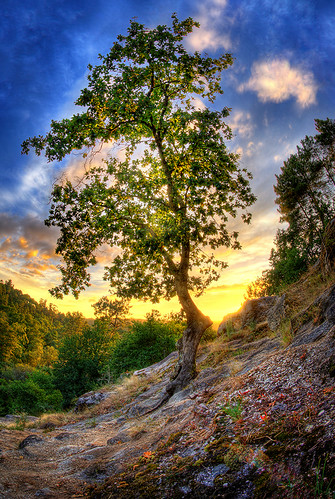environment no matter how small the household’s lawn is.
Because of this, homeowners and contractors alike should be
aware of this fact and find ways of lessening the impact of
this activity.
Here are some tips on having an earth-friendly landscape.
1. Find plants that consume little water
- one of the main requirements of a landscape is to have an
ample amount of water for the plants. But since water is
becoming a scarcer and scarcer commodity, homeowners should
choose plants that consume little water.
Not only do they help save the environment, they also help
cut a homeowner’s water costs.
Plants that are native to your area are plants that will use less
water. They are better able to withstand draught.
 In our area cactus do very well and do not take a lot of water.
In our area cactus do very well and do not take a lot of water.As you can see they are quite lovely as well.
2. Use organic fertilizers
- artificial fertilizers contain chemicals that may
otherwise be harmful to the soil.
Organic fertilizers should therefore be chosen in favor of
artificial ones to lessen its impact on the soil and at the
same time, ensure that one has a healthy plant.
Creating a compost pit and using cut grass as mulch can
help provide organic fertilizers to a garden.
3. Have trees in your lawn
- trees provide shade in your lawn and if they are
well-positioned, they can reduce energy costs spent on
cooling and heating.
Choose the right kind of tree for the right area in your yard.
*If you can plant evergreen trees to the north of your home to
block the cold winds of winter that blow from that direction.
They keep the needles all year long so they block the winds.

*Plant trees that the leave fall off in the fall to the south to
block the heat of the day for less cost for cooling your home.

4. Find alternative sources of water
- while sprinklers are a great way to water a lawn, rain
water can be a good alternative too. So when designing a
landscape, find a way of irrigating it using rain water
from the household’s rooftops.
 A rain barrel collects the water from your roof and with the faucet
A rain barrel collects the water from your roof and with the faucetyou can put a hose on it and water your plants. If you get a lot of rain
you can put more than one so when one is full it will send it to the other
one from the top overflow hose at the top to go into the other barrel.
This helps a lot in cutting the costs on water used by
sprinklers.
Please leave your comments, we love to read them.
Dan and Deanna "Marketing Unscrambled"
No comments:
Post a Comment